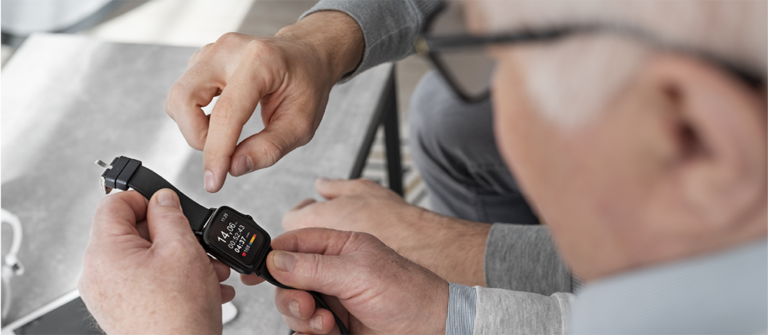
Medical alert systems are crucial devices designed to provide immediate assistance during emergencies, particularly for older people or individuals with medical conditions. These systems enable users to call for help with a simple button press, connecting them to a monitoring center or emergency services.
Understanding the costs associated with medical alert systems is essential, as it helps users and their families make informed decisions that align with their needs and budget, ensuring they receive valuable support without unnecessary financial strain.
Factors Influencing Costs
Several factors influence the overall cost of medical alert systems, each contributing to the final price users pay:
- Monthly Fees: The most apparent cost is the monthly service fee, which can vary significantly between providers. This fee often covers the monitoring service, ensuring someone is always available to respond when the alert system is activated.
- Equipment Costs: Users may face initial costs for the equipment, including the base unit and wearable devices. Some companies offer to rent the equipment, which can affect the monthly fee, while others require a one-time purchase.
- Activation Fees: Certain providers charge an activation or installation fee to set up the system. This fee can vary and sometimes be negotiated or waived during promotions.
- Service Features: Additional services like fall detection, GPS tracking, and mobile alert capabilities can influence costs. These features enhance the system’s effectiveness but often come with additional monthly fees.
By considering these factors, users can better understand what they’re paying for and choose the best balance of cost and essential services. This knowledge empowers individuals to select a medical alert system that provides peace of mind and reliable assistance without overextending their budget.
Cost Breakdown
When considering a medical alert system, potential costs can include:
- Monthly Service Fees: These fees are essential for maintaining the connection to the monitoring service. Depending on the provider and service level, they can range from approximately $20 to $45 per month.
- Equipment Costs: Initial costs may involve purchasing or renting the alert device, wearable devices, and additional hardware. Depending on the system’s complexity, these costs can vary from $50 to over $300.
- Activation Fees: Some providers charge a one-time activation or installation fee ranging from $25 to $100.
- Additional Features: Services like fall detection, GPS tracking, or mobile capabilities can incur extra monthly fees, generally between $5 and $15.
Medical alert systems come with various costs, including monthly fees, equipment fees, activation fees, and additional service fees. Monthly fees typically range from $20 to $45, depending on the device type and service level. Equipment fees vary widely, from $50 to $350, and some companies also charge activation fees that can go up to $200. Add-on features like fall detection, GPS tracking, and caregiver apps might incur additional monthly charges
Comparing Costs Across Brands
When considering a medical alert system, comparing costs across different brands is crucial to finding the best value for your needs. While each brand offers unique features and services, understanding their pricing structures—from monthly fees to equipment costs—can help you make an informed decision.
Compare Medical Alerts Brands Pricing:
| Brand | Monthly Fee | Startup Cost | Device Prices | Subscription Plans | Additional Feature Costs |
| MobileHelp | From $19.95 | $0 | N/A | Monthly, Yearly | Fall Detection: $10/mo |
| Medical Guardian | From $39.95 | $149.95 – $199.95 | Varies | Monthly | Fall Detection: $10/mo |
| Bay Alarm Medical | From $27.95 | Varies | $99 – $159 | Monthly | Fall Detection: $10/mo |
| LifeFone | From $24.95 | Varies | N/A | Monthly, Quarterly, Yearly | Fall Detection: Varies |
| ADT Health | From $29.99 | $0 | N/A | Monthly | Fall Detection: $10/mo |
Let’s delve into a comparative analysis of prominent medical alert system providers, highlighting their cost-effectiveness and service offerings.
- MobileHelp: Known for its affordability and variety of options, MobileHelp’s at-home system starts at $19.95 per month, with an additional $10 per month for fall detection. They offer a range of systems, including at-home and on-the-go options.
- Medical Guardian: Offers a range of devices, including the MGMini and MGMove, with monthly costs starting at $39.95 and equipment fees ranging from $149.95 to $199.95. They provide comprehensive services, including GPS tracking and activity monitoring.
- Bay Alarm Medical: This brand is highlighted for its value, offering systems with monthly fees starting at $27.95. They also provide a variety of systems, including at-home and on-the-go options, with transparent pricing on additional services like fall detection.
- LifeFone: Offers a range of services with monthly fees starting around $24.95. They provide at-home and on-the-go systems, emphasizing customizable plans that cater to individual user needs.
- ADT Health: Known for its reliable home security systems, ADT Health extends its expertise to medical alert systems. Their monthly fees start at $29.99, offering both in-home and mobile solutions with various add-on features to enhance user safety.
In conclusion, while each medical alert system brand offers its features and pricing models, a thorough comparison can help you identify which aligns with your needs and budget.
Whether you prioritize lower monthly fees, specific service features, or flexible subscription plans, there is a medical alert system out there that fits your criteria. By carefully evaluating the costs and services of each brand, you can make an educated decision that ensures safety and peace of mind without overspending.
Cost-Saving Tips
When it comes to medical alert systems, there are several strategies you can employ to reduce expenses without compromising on safety and service quality:
- Annual Payment Plans: Many providers offer discounts for customers who opt for yearly payments instead of monthly payments. Paying upfront for a year can significantly reduce the overall cost.
- Insurance and Medicaid: While Medicare does not typically cover medical alert systems, some private insurance plans or Medicaid programs, especially in certain states, might offer partial or complete coverage. It’s worth checking with your insurance provider or state Medicaid office to see if you qualify for reimbursements or discounts.
- Sales and Holiday Specials: Watch for sales and holiday specials from medical alert companies. Discounts during these times can lead to substantial savings on equipment or subscription fees.
- Local Programs: Some local government or community programs offer financial assistance for seniors or individuals with disabilities to acquire medical alert systems. Contact your local Area Agency on Aging to learn about available resources in your community.
- Comparison Shopping: Don’t settle for the first option you find. Comparing prices and features across different brands can help you see the most cost-effective solution that meets your needs.
- Avoid Unnecessary Features: While additional features can be beneficial, they often come with extra costs. Assess your needs and avoid paying for features you’re unlikely to use.
Implementing cost-saving strategies can significantly reduce the financial burden of medical alert systems while ensuring you or your loved ones remain protected. By exploring payment options, researching potential insurance benefits, and carefully selecting necessary features, you can optimize expenses without compromising the essential services that medical alert systems provide. Remember, the goal is to balance cost-effectiveness and reliable, life-saving functionality.
Making an Informed Decision: Choosing the Right Medical Alert System
Understanding the costs associated with medical alert systems is crucial to making an informed decision that aligns with your budget and needs. By considering the various factors influencing pricing, comparing different brands, and implementing cost-saving strategies, you can find a medical alert system that provides peace of mind and safety without overburdening your finances. Remember, the best medical alert system offers the features you need at an affordable price, ensuring you or your loved ones can quickly access help in emergencies.
Frequently Asked Questions
What are the typical monthly fees for medical alert systems?
Monthly fees for medical alert systems can range from $20 to $45, depending on the type of system (at-home or on-the-go) and the features included.
Are there any initial costs associated with medical alert systems?
Yes, some medical alert systems come with initial costs, such as equipment fees, which range from $50 to $350, and activation fees, which can go up to $200.
Can I save money by choosing an annual payment plan for my medical alert system?
Many medical alert system providers offer discounts for customers who choose annual payment plans over monthly payments, potentially leading to significant savings.
Do insurance plans cover medical alert systems?
Medical alert systems are generally not covered by Medicare, but some private insurance plans or Medicaid programs might offer partial or complete coverage. It’s essential to check with your insurance provider.
How can I find the most cost-effective medical alert system?
To find the most cost-effective system, compare prices and features across different brands, consider only the features you need, and look out for sales, discounts, or local programs that help reduce costs.








